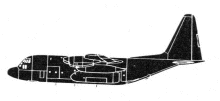Incident Overview

Description
The aircraft was returning from a routine re-supply flight to Fossil Bluff, a remote field station situated on Alexander Island on the Antarctic Peninsula. The wind for the approach was reported as 360ø/10 kt at the Rothera runway anemometer and 070ø/20 knots at the area anemometer. The pilot was familiar with this type of condition and decided to make an approach to runway 36 using 20-25 degrees of flap. There was some turbulence on the approach and after landing the pilot had difficulty maintaining directional control and carried out a go-around from the runway. The pilot then decided to make an approach to runway 18, and if necessary, carry out another go-around. The second approach to Rothera appeared normal and touchdown was about 200 metres along the runway. After touchdown the pilot applied some braking, full right rudder, and full left aileron to keep the aircraft straight and the wings level. Bearing in mind that he might have to carry out another go-around from the runway, the pilot used little or no reverse thrust. Initially directional control appeared adequate, but as the aircraft approached the mid-point of the runway it started to veer to the left and at some point the pilot attempted to use nosewheel steering to assist with directional control. Shortly thereafter he decided to carry out a go-around, but the aircraft veered further left. The nosewheel detached and the aircraft tipped to the right to the point where the right wing touched the runway surface and the aircraft flipped over in a forward somersault pivoting about the nose and the right wing tip. The aircraft rapidly came to a halt, inverted, about 520 metres from the runway threshold. The pilot and his passenger, who was seated in the right pilot’s seat, attempted without success to shut down the engines using the fuel levers. They vacated the aircraft through the right cockpit window having suffered minor abrasions and some bruising.
Primary Cause
Turbulence and navigational errors during approach and subsequent go-around, exacerbated by the pilot’s reliance on flap settings and a lack of sufficient directional control.Turbulence and navigational errors during approach and subsequent go-around, exacerbated by the pilot’s reliance on flap settings and a lack of sufficient directional control.Share on:


